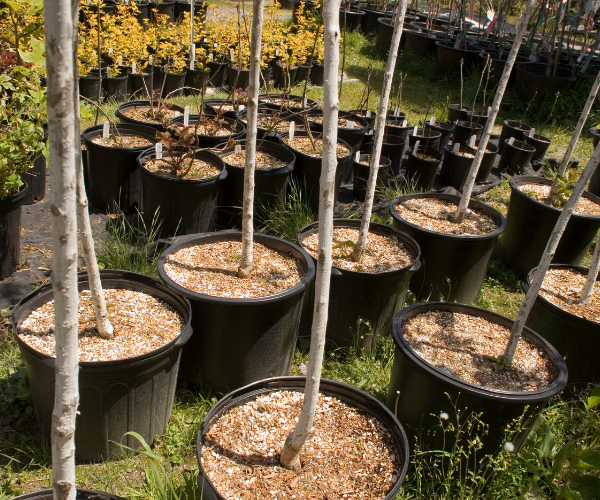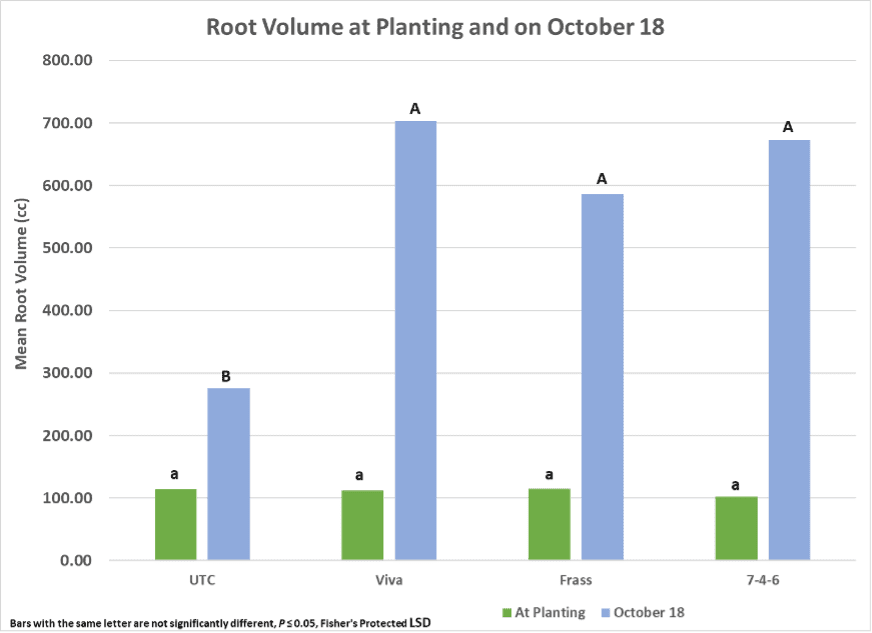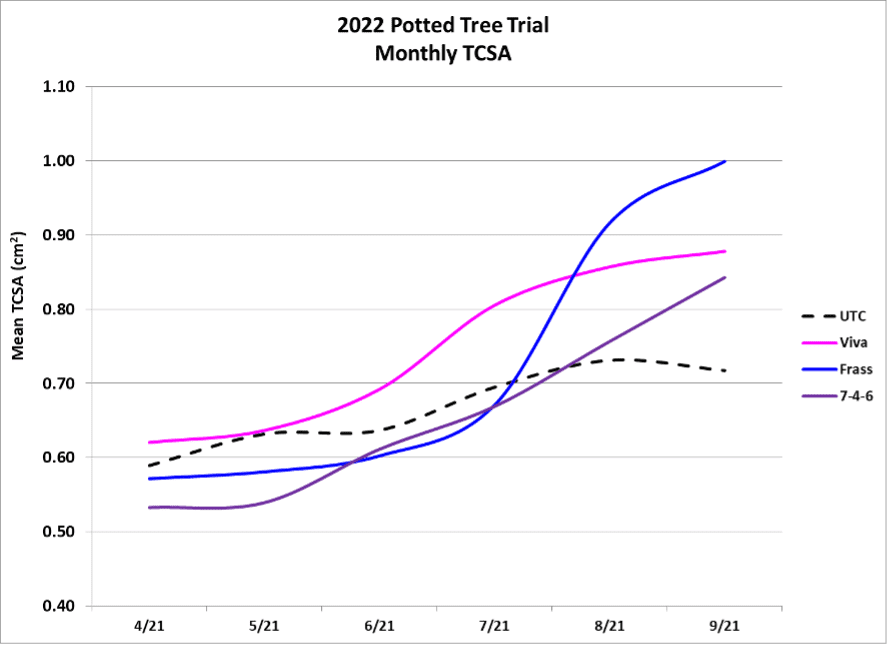
Soil Health and Baby Tree Performance
Other important components include rootstock choice, training system, fertility and soil health. Most young trees are fertigated with some form of starter fertilizer, but frequency of applications has been a bit unclear. This has led to some new plantings being over-fertilized in the first season, resulting in stunted tree growth, high salts concentrations, and poor block performance.
The idea of soil health has elevated in importance in the past decade or so as well, especially as things like carbon sequestration and soil biota become easier to quantify. However, little is known about the effects of our fertilizer programs on soil health.
We set up a few trials last season to look at the effects of various starter fertilizer regimes on tree growth and soil health. One of the trials was conducted on potted trees so that we could destructively harvest the trees at the end of the growing season to measure root growth.
The potted tree trial also allowed us to more tightly control variables that we couldn’t control in the field trials. For example, we created our own planting media by mixing 2 parts sand with 1 part sphagnum to ensure there were very low background nutrient levels available to the trees. We also very tightly controlled irrigation to ensure that each tree received the exact same amount of water at each irrigation and for the entirety of the season. And we ensured that the bud unions were a consistent height above the soil surface to remove the effect of planting depth on tree growth.
For this trial, we measured 13 different metrics of tree growth, tree health, soil health, and nutrition, including:
| Root Volume | Root Biomass | Scion Biomass |
| Trunk Cross Sectional Area | Shoot Growth | Vertical Growth |
| Leaf Chlorophyll | Soil Nutrition | ACE Protein |
| 4-day Soil Respiration | Total Organic Carbon | Available Carbon |
| Aggregate Soil Stability |
Treatments included Valagro’s Viva, Beta Hatch Mealworm Frass, and Intelli-Gro 7-4-6.
No one single treatment produced the best results in every category measured, but a couple of treatments did stand out – Viva was remarkable for feeder root development, root volume, and leaf chlorophyll content while the Beta Hatch Mealworm Frass stood out for trunk cross sectional area and all of the soil health metrics measured.
Unknown to us at the time, Dr. Tracey Somera with the USDA lab in Wenatchee was conducting a similar potted tree trial using fumigated soil from WSU’s Sunrise Orchard.
Her treatments were different than ours, expect for one – she also had a treatment using the Beta Hatch Mealworm Frass at the same rate that we used, and she also showed a significant increase in trunk cross sectional area from that treatment.
The Beta Hatch Mealworm Frass has a great fit for restoring beneficial soil microorganisms in fumigated soil as it contains 5 x 107 CFU (Colony Forming Units) of beneficial microbes per gram of product. We’re already making applications for that in soils that were fumigated last fall.
We will be repeating our potted tree trial this season using one of the newer Geneva rootstocks for apple, as well as Krymsk 5 for cherry.
The following data are excerpted from our study report. If you’re interested in a copy of the full report, please reach out.




